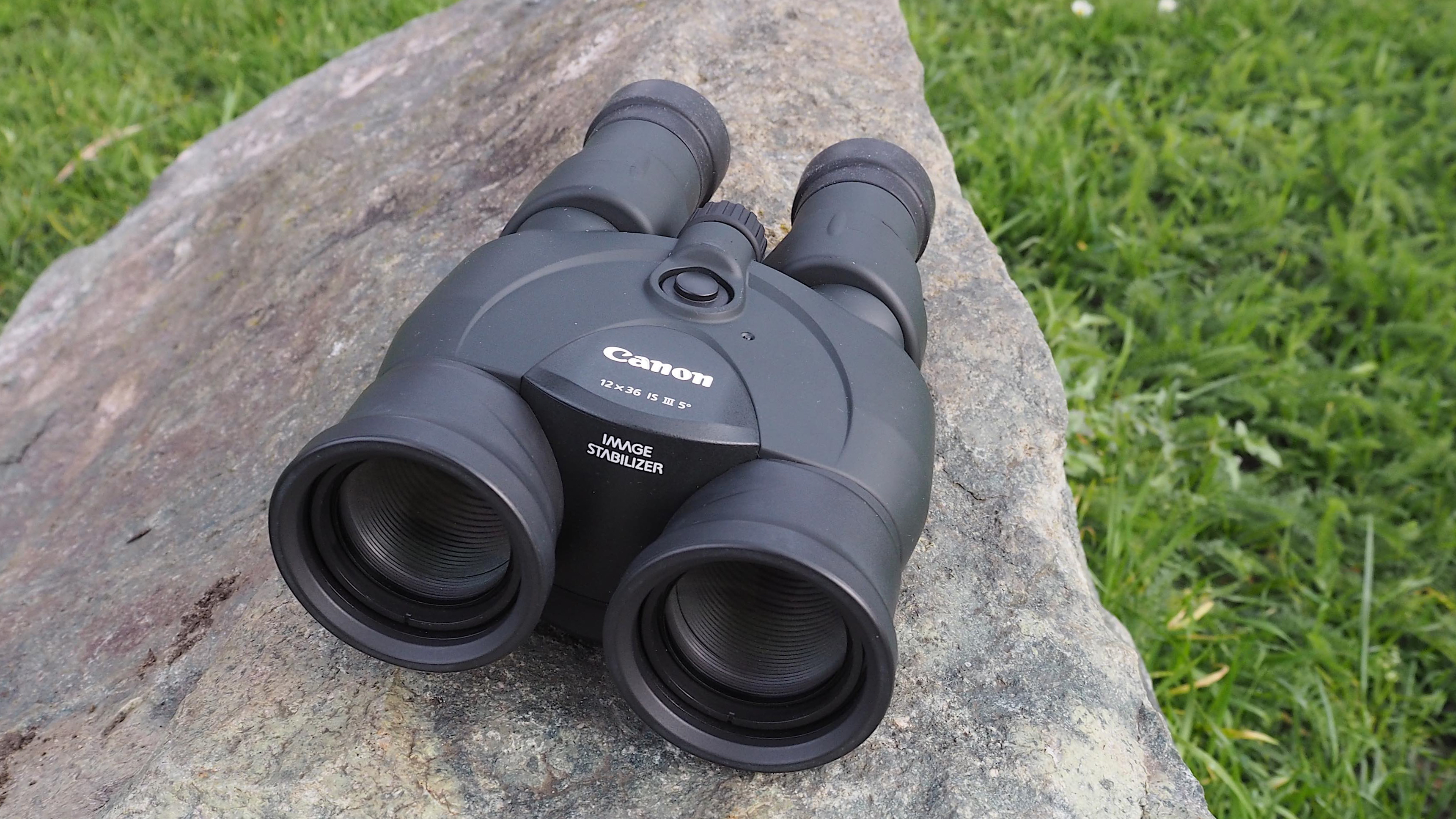
Image stabilized binoculars are great in theory. Who wouldn’t want a perfectly smooth view of a subject that is hundreds of yards away, an on-board gyro sensor ably compensating for any slight tremor in the observer’s hands? Or, want to get a steady view of wild beasts from the safety of our Land Rover on safari as it bumps along a dirt track? Again, a flat and level view will allow us to better identify distinguishing details from afar, making IS equipped binoculars a boon for wildlife watchers, sports fanatics, astronomy geeks and more.
While that’s all great on paper, in reality there are a few downsides to image stabilized binos. First off, because of the on-board electronics, they cost more than standard non-IS binoculars that offer a similar magnification and objective lens size. And because of the need to house both these electronics and the battery, or batteries plural, image stabilized binoculars are typically bulkier and weightier than their strictly analogue competitors. Also, it’s rare to find a completely weather or water proofed IS binocular, and when we do, we can expect an even higher asking price for the privilege - such as with the Canon 10x42L IS WP.
Following that broad summary of the positives and negatives, where does the image-stabilized Canon 12x36 IS III binocular we’re rating here fit in? Well, this is a mid range, mid priced model that comes supplied with a very useful 12x magnification and equally usable 36mm objective lens. That would be an attractive and practical proposition even without any shake suppression on board.
This is essentially because, as with any binocular, the larger the lens, the more light it lets in, and, theoretically, the brighter, clearer, and sharper the result, particularly when external light levels start to drop or if we’re gazing at the night skies. Yes, this device may be a little bulkier than comparable non-IS alternatives, but given its core specification, might the extra millimeters and higher price tag actually be worth it in the case of the Canon 12x36 IS III? Read on to find out…
Canon 12x36 IS III Specifications
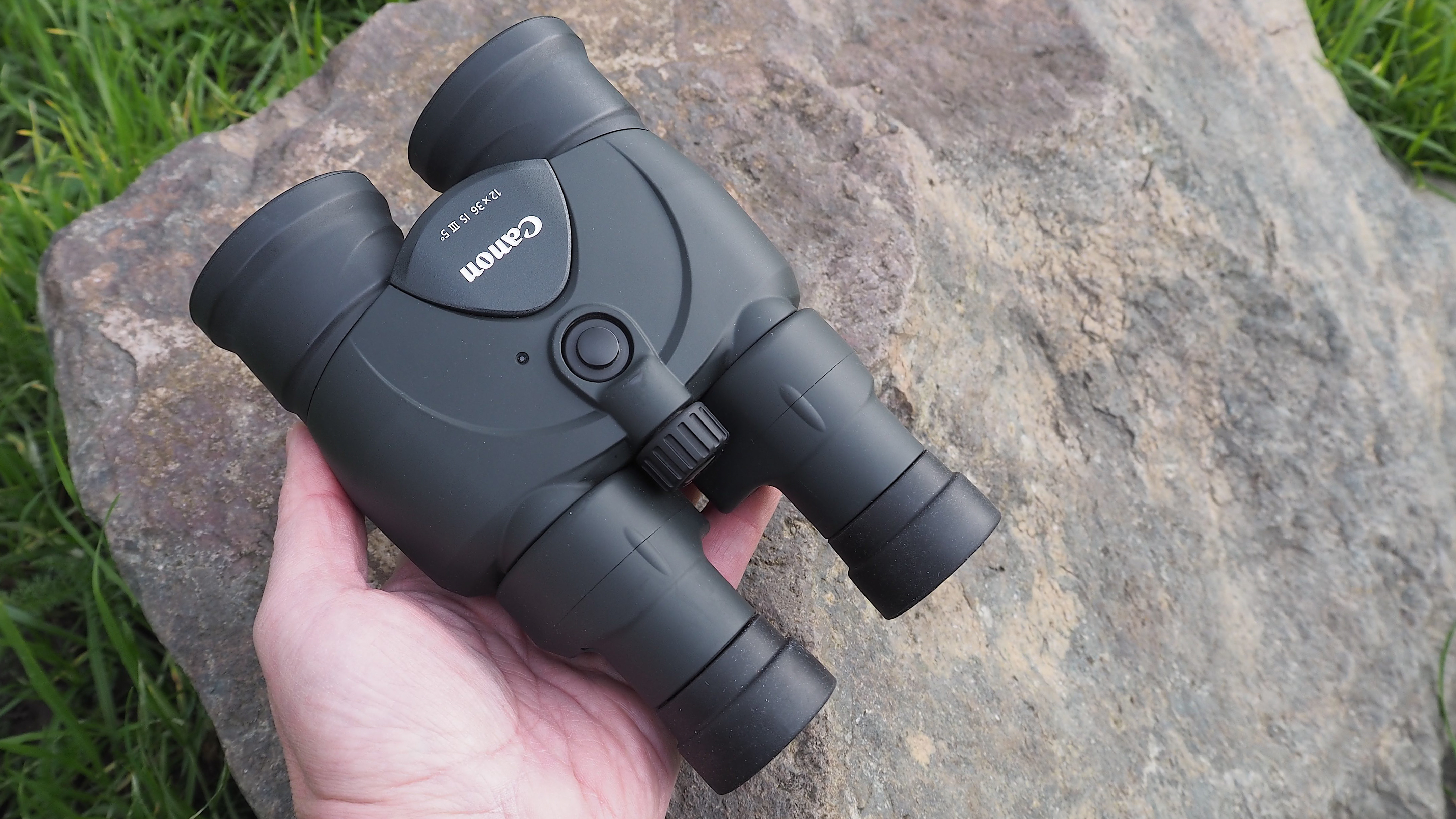
Canon 12x36 IS III Key Features
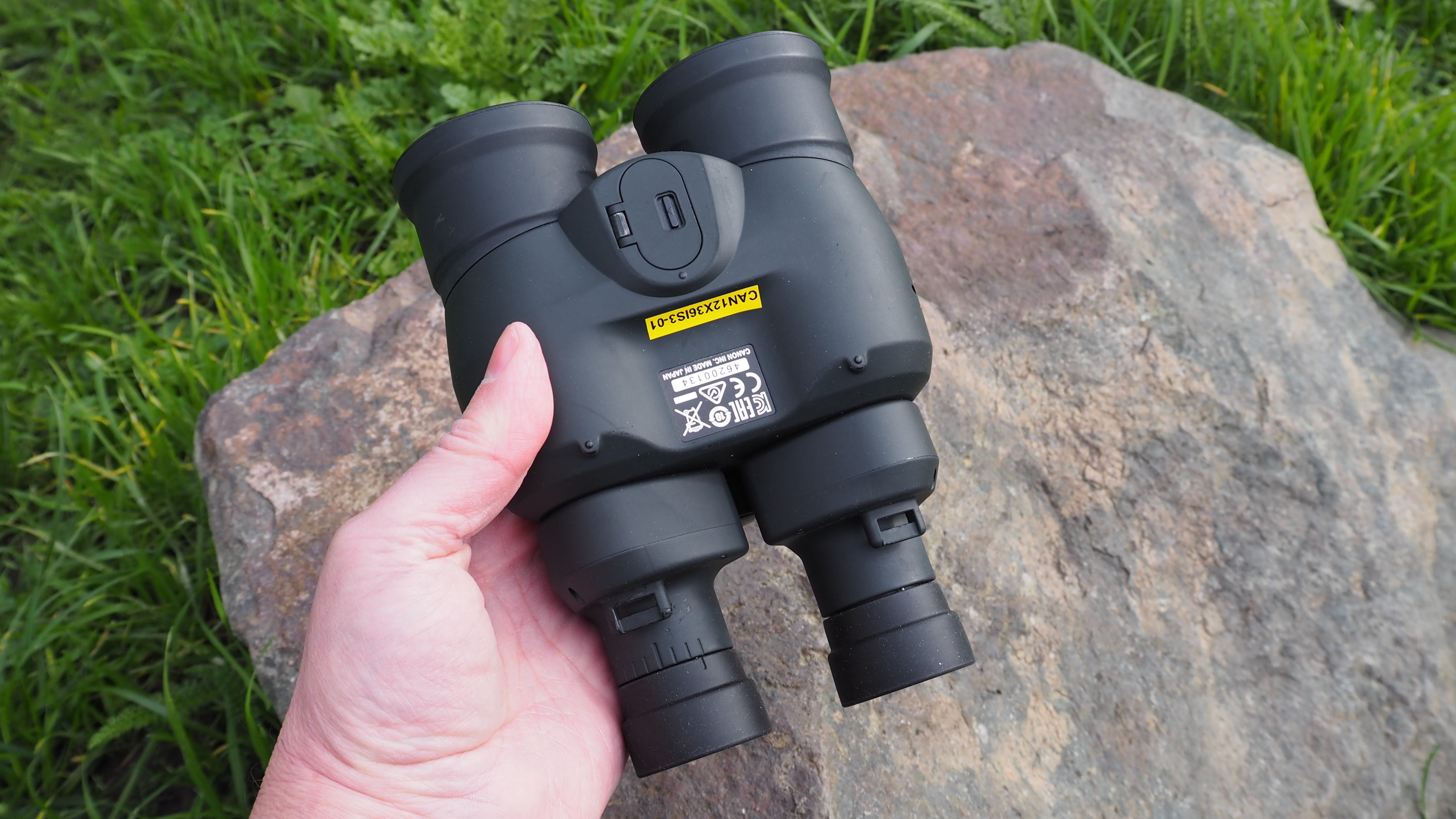
Exciting image stabilization possibilities aside, the core 12x36 specification is what we should literally be focusing on as regards this porro prism type binocular. To our eyes it’s a very good, useful marriage of respectable 12x magnifying power and generous 36mm objective lens size. We feel it leaves us less short changed than we might be using Canon’s more compact but less powerful image stabilized 8x20 IS or 10x20 IS alternatives.
But yes, the built-in anti shake feature is why we’ll considering buying this particular model and paying the premium over alternatives, with Canon’s promise being that it delivers a clear, flat view from edge to edge, thanks to a combination of gyro sensor and microprocessor. This set up obviously needs a power source and here that comes courtesy of two regular sized AA batteries that are hidden under a flap at the base of the binocular. We’re told these will provide sufficient juice for up to nine hours of image stabilization, depending on the temperature they’re being used in. If we’re using them in -10°C for example, they’ll last just an hour. However ideally we’ll want to avoid using this model in anything other than the lightest of drizzle. It is waterproof or weather resistant in any way.
As on the Canon 8x20 IS, the 12x36 IS III features the same Super Spectra lens coating as found on Canon’s EF camera lenses, its optical expertise standing it in good stead here. As with Canon cameras, the aim here is in providing high resolution viewing with low distortion, while preventing ghosting and scattered light. We found we were getting natural colours and an impressive level of sharpness in use.
Canon 12x36 IS III Build & Handling
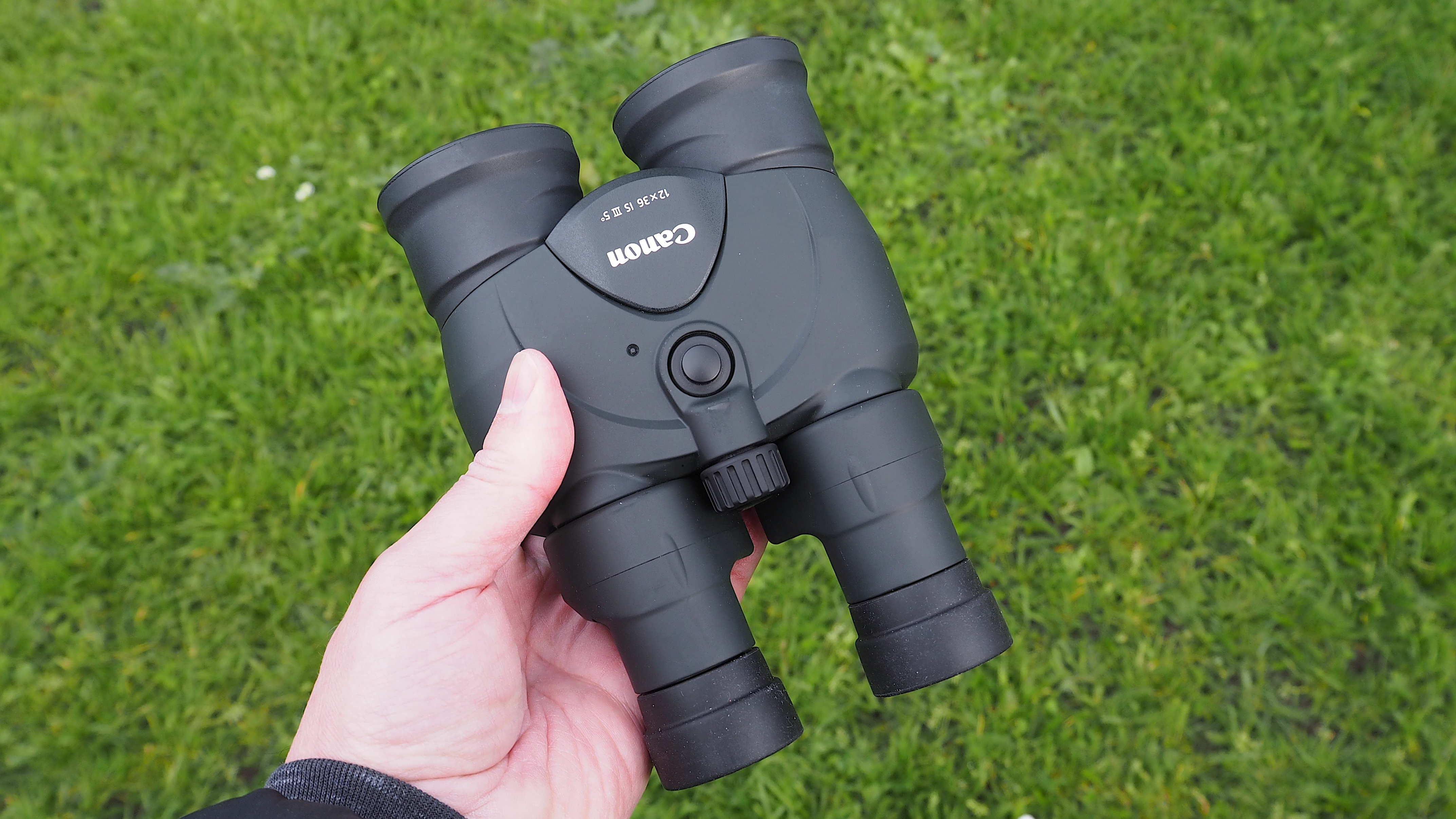
Roughly the size of a hardback book, while not huge, these binoculars are too big for a jacket pocket. Luckily a carry case with shoulder strap is provided, though it’s padding is a bit thin for our liking, so a backpack or camera case would be a better longer-term option.
Due to its larger size and the fact that its body has more of a rubbery feel, we found the 12x36 IS III easier to grip than the smaller, smooth-surfaced Canon 8x20 IS we had on test during the same period. Yes, because there is a higher magnification on offer here, any slight shake from the hands of the user is potentially amplified that much more, and that’s why it feels more useful and practical to have IS included here. That said, it is possible to hand-hold this binocular and get perfectly acceptable results without having to rest a finger on the dedicated IS activation button. But deploying it will aid viewing comfort and alleviate eye fatigue over longer periods.
While the rubber coating to the binocular’s exterior gives it a robust as well as contemporary look and feel, the image stabilizer button and ridged focus knob are ergonomically and centrally located between the eyepieces for easy access. In practice, with our eyes up against the comfortable rubber eyecups, we found the forefinger of our right hand naturally came to rest on the focus dial, which has just the right amount of give, while our middle finger sought out the IS button, which we need to keep pressed down for the feature to remain active.
While the rubber eyecups seem to attract dirt and fluff, fortunately the rubber coating of the rest of the body manages to avoid attracting detritus. Rotating the cup of the right eyepiece, a dioptric adjustment ring, also allows us to fine tune focus as desired.
Again, as with the 8x20 IS from Canon, the eyepieces pivot to a limited degree to let us comfortably adjust the spacing between them to better match our own eyes. Usually on standard binos with this feature, the entire body will be foldable along the central axis to allow us to achieve this. Here the front end of the Canon remains solid and fixed.
While there are no caps for the lenses, two are included that slide onto the eyepieces. Because they’re of the slip-on variety however, it’s very easy for them to become detached when fetching the binocular in and out of its carry case. We can see them quickly becoming mislaid or worse lost with repeated use, as there’s no lug to tether them to the provided strap. But this is a minor handling gripe. All the rest is straightforward and operation as swift and fluid as we could hope for.
Canon 12x36 IS III Performance
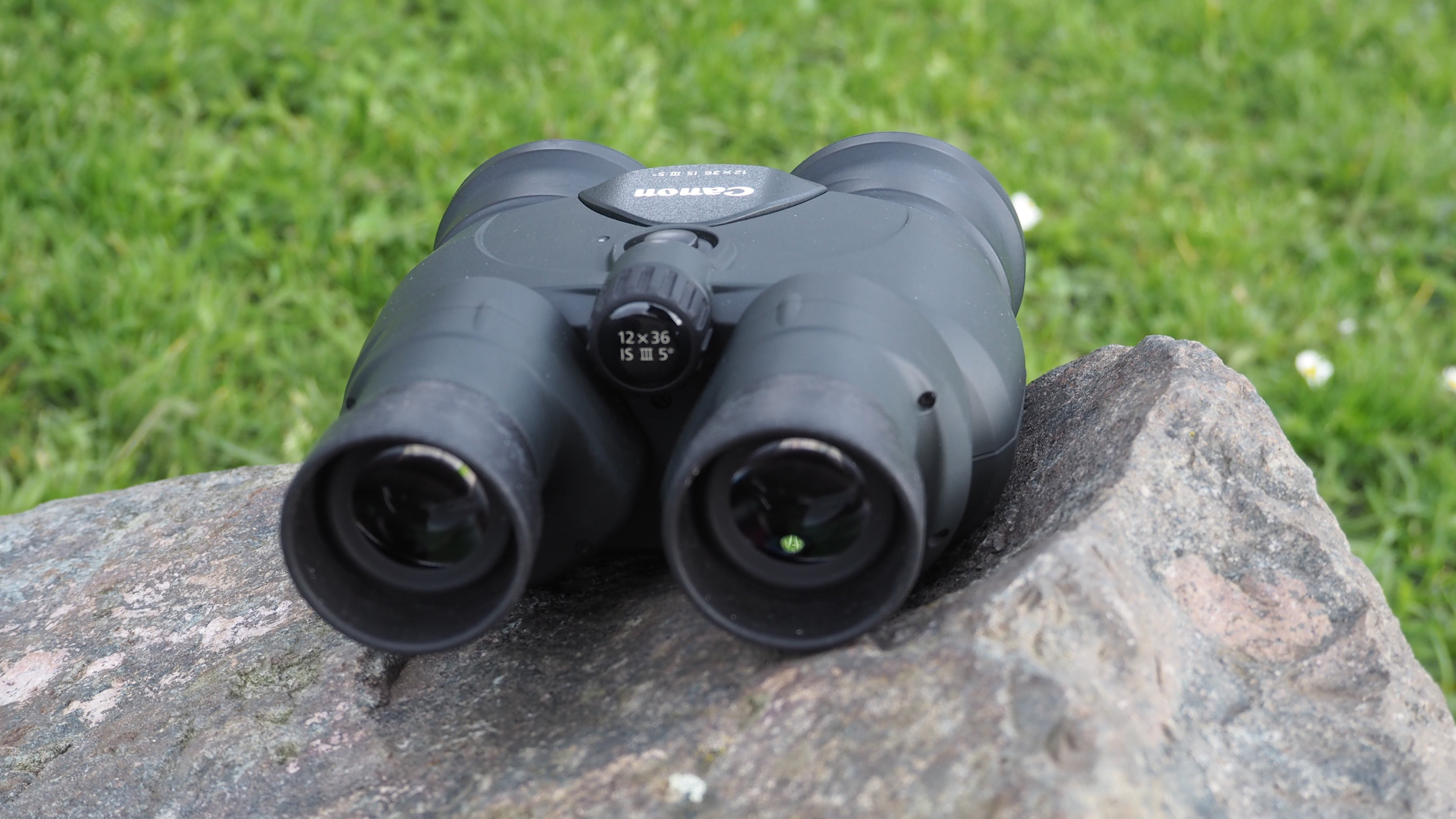
While the bigger body shape of the 12x36 IS III may be off-putting to some, especially when ranged alongside the more compact 8x20 IS model from Canon, we didn’t find it prohibitively so. Like the rest of its maker’s IS range the look here is contemporary and slightly futuristic compared with non-IS porro prism alternatives. There will be those who prefer a more classic look and feel to their binos, but here it’s about melding tradition with tech and a modern design to go with it.
So what of the Canon 12x36 IS III main selling point; that much-discussed body integral anti shake function? As noted it’s activated with a single button press. Unfortunately, unlike on some models where there’s the ability to press a button once to activate IS and then a second time to deactivate it when done, here we have to keep a finger resting on the button at all times, a green lamp illuminated beside if as if we needed confirmation that it was working. A light press is all that’s required and most of us will be using the feature for shorter periods anyway, so it’s not a big deal. We’re more concerned with how it functions. And it functions great.
One quick press and near instantly any judder we were detecting in the image is banished. The image presented is so clear and natural that we feel like our own eyes have zoomed in, in being greeted with a flat, steady image. If we try panning with the binoculars any subjects simply glide with us, rather than oscillate wildly. If this is what you’re considering paying a premium for, along with this model’s decent core spec, you won’t be disappointed. The feature works and works well as we’d expect from Canon and a binocular in its price range. Quality is such that it’s like we’re viewing these subjects close up with our own eyes, which is exactly how we’d want it to be.
Canon 12x36 IS III 8x42 Verdict

As long as you don’t mind paying a premium for the privilege, whether you’re birding, stargazing or watching sports, the Canon 12x36 IS III binocular will quickly come into its own as your go-to observational tool.
What we love about this particular model is the blend of decent core specification and high tech solution to a common problem that is the gyro sensor powered image stabilization feature. Overall this really does feel like a balanced product… no pun intended.







